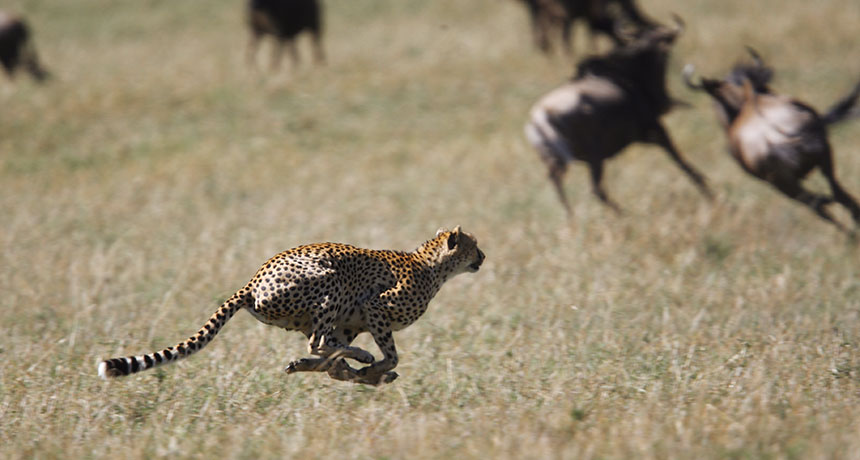Why midsize animals are the fastest

Speed has its limits — on the open road and the Serengeti. Midsize animals tend to be the speedsters, even though, in theory, the biggest animals should be the fastest. A new analysis that relates speed and body size in 474 species shows that the pattern holds for animals whether they run, fly or swim (see graphs below) and suggests how size becomes a liability.
This relationship between speed and size has long stumped scientists. Big animals have longer legs or flippers to get from point A to point B. And bigger bodies have higher metabolic rates and more fast-twitch muscle cells, needed to convert chemical energy into mechanical energy and rapidly accelerate. So, why aren’t wildebeests faster than cheetahs?
The make-or-break factor is the time it takes an animal to accelerate to its top theoretical speed, an upper limit based on mass and metabolic rate, researchers report July 17 in Nature Ecology & Evolution. Fast-twitch muscle cells provide the power for acceleration but tire quickly. When an animal gets too big, it takes too long to accelerate, and these cells use up their energy before hitting top speeds. More modestly built critters need less time to accelerate to those speeds.
The researchers gathered speed and size data from past lab and field studies. The animals (some shown as icons in the slideshow below) ranged in mass from 30-microgram Spanish mites to a blue whale weighing 108 metric tons.